After you complete The Legend of Zelda, you’re given a new adventure to play, complete with new secrets and new dungeons. I figured it would be best to compare this “second quest” stuff too and see how they’re different in Japanese and in English.
Most of the text in the second quest is taken straight from the first quest, so there’s no need to look at all those lines again. Instead, we’ll take a look at the new lines of text and some other points of interest.
Second Quest File
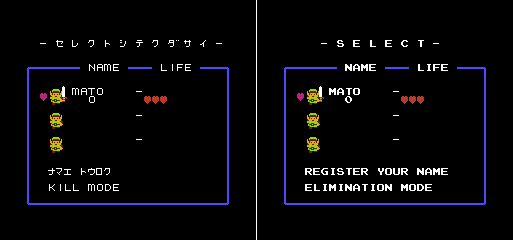 |
As we can see, the little icon of Link with a sword is used in both games to mark files that are second quest save files.
Incidentally, the trick of jumping straight to the second quest by naming your character “ZELDA” works in both games too.
Arrow Man
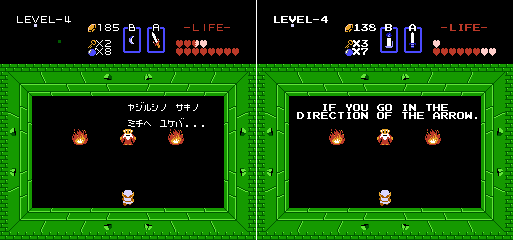 |
In the NES version of the game, this old man in Level 4 says, “If you go in the direction of the arrow.”
Seems kind of strange, but the Japanese isn’t much different: “If you go in the direction of the arrow mark…”
I suppose the most noteworthy thing to mention is that in Japanese it’s 100% clear that he’s referring to the kind of arrow that points at something. But in English, “arrow” can mean a couple things, and we saw in the first quest text that this ambiguity came into play at one point. But in this case it’s still fairly clear that he’s probably talking about the kind of arrow that points at something and not the kind that you shoot.
Also, the old man says this line in a slightly “old wise person” style in Japanese.
Dastardly Old Man!
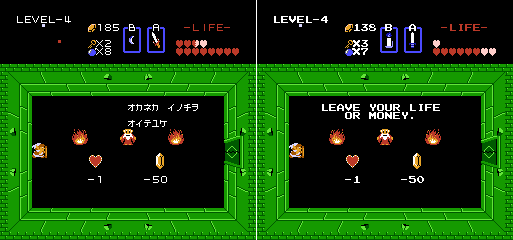 |
Another old man in Level 4 (and in other levels) will block your path and say in the NES version, “Leave your life or money.”
The Japanese text is basically the same. It’s very literally something like, “Leave your money or life and go.” I guess the main point of interest is that he says it like an old guy in Japanese.
Giving Directions
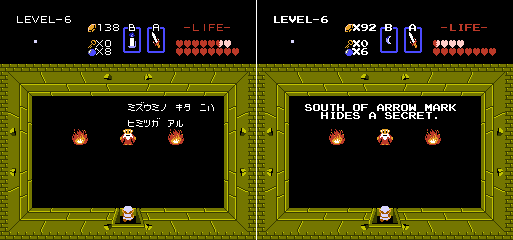 |
An old man in Level 6 says in the Famicom version, “There’s a secret north of a lake.”
In the NES version, he instead says, “South of arrow mark hides a secret.”
That’s a pretty big difference, what’s the deal? Well, he’s essentially giving a hint on where to find Level 8. Here’s where Level 8 is located in the game:
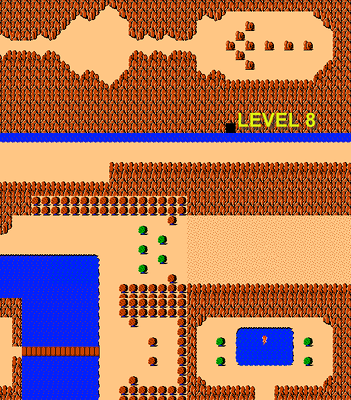 |
The Japanese hint is saying that you need to look north of a lake. There are lots of lakes and ponds in the game though, so this is a little vague. We can see here that the secret entrance to Level 8 is two screens directly north of the pond with the fairy. But if that’s what the hint means, it’s a pretty poor hint.
I’m guessing the localizers picked up on this and decided to simplify it by using a different landmark. As you can see, the entrance to Level 8 is one screen directly south of the arrow-shaped rock formation.
So in this instance, the English localization was an improvement over the original text. AND it didn’t make any horrible grammar or spelling mistakes – although it could still have been worded more naturally 😛
Dead-End Tree
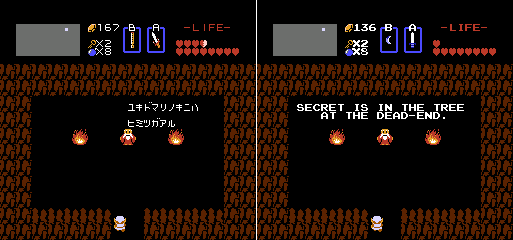 |
An old guy in the second quest says in the NES version, “Secret is in the tree at the dead-end.”
This line actually appeared in the first quest too, and as we saw there, the Japanese version isn’t very different.
So why bring it up? Well, I’m actually not sure why this line even exists in the second quest! The tree at the dead-end used to be the entrance to Level 8 in the first quest, but in the second quest there’s nothing there at all. So why keep this clue in the second quest? And why did the localizers notice the messed-up clue above but keep this one the same? I really have no idea. Any thoughts?
Second Quest Ending
The end screen of the second quest is slightly different from that of the first quest:
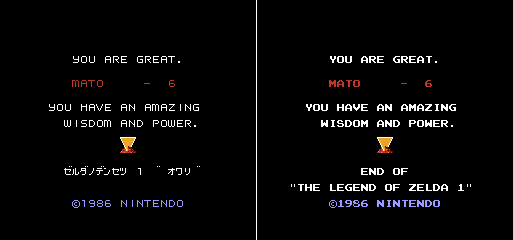 |
In both versions, it spells out “You have an amazing wisdom and power.” in English. I wonder why it’s in English in the Japanese version here when the first quest ending used Japanese?
At the bottom, it says in the NES version, “End of ‘The Legend of Zelda 1′”.
In the Japanese version, it says, “Legend of Zelda 1 ‘End'”.
No big difference to really speak of. I like how they knew before the game was released that they were going to make a second one, though. In fact, when this game was re-released as a Famicom cartridge, the game’s title even changed to “Legend of Zelda 1”:
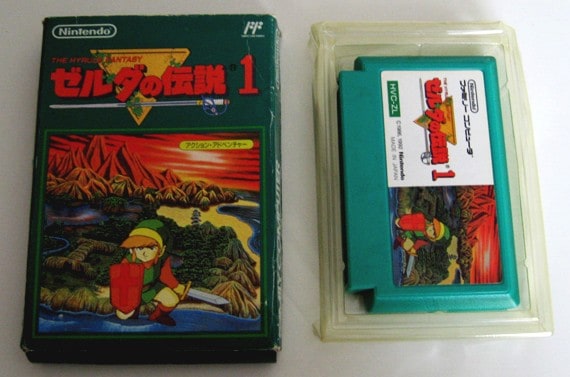 |







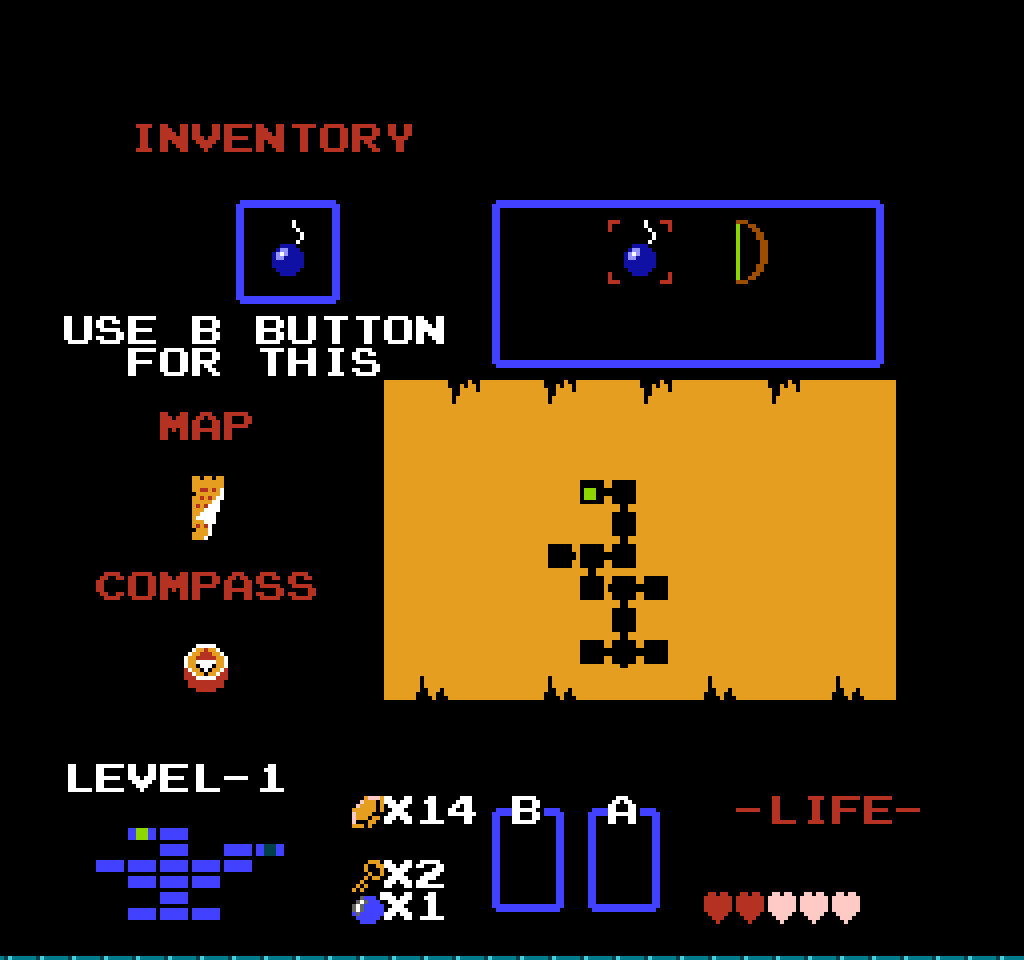
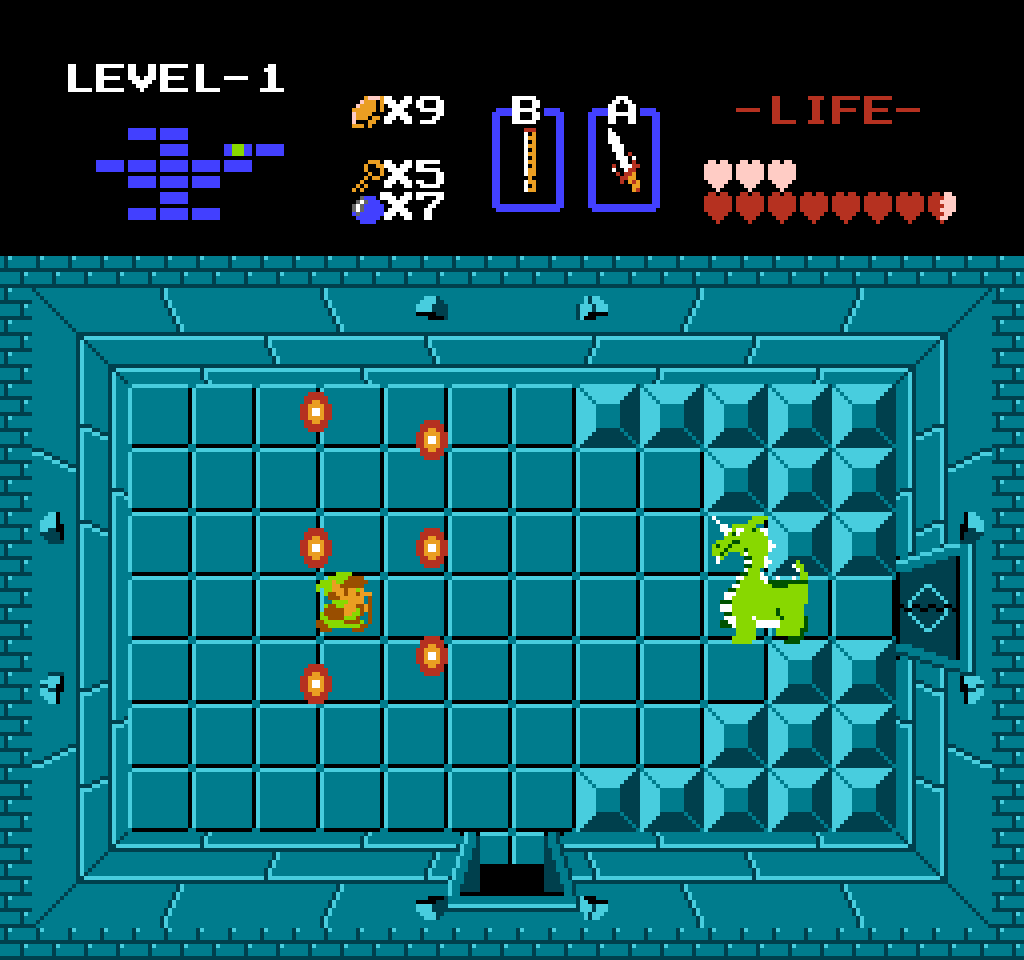
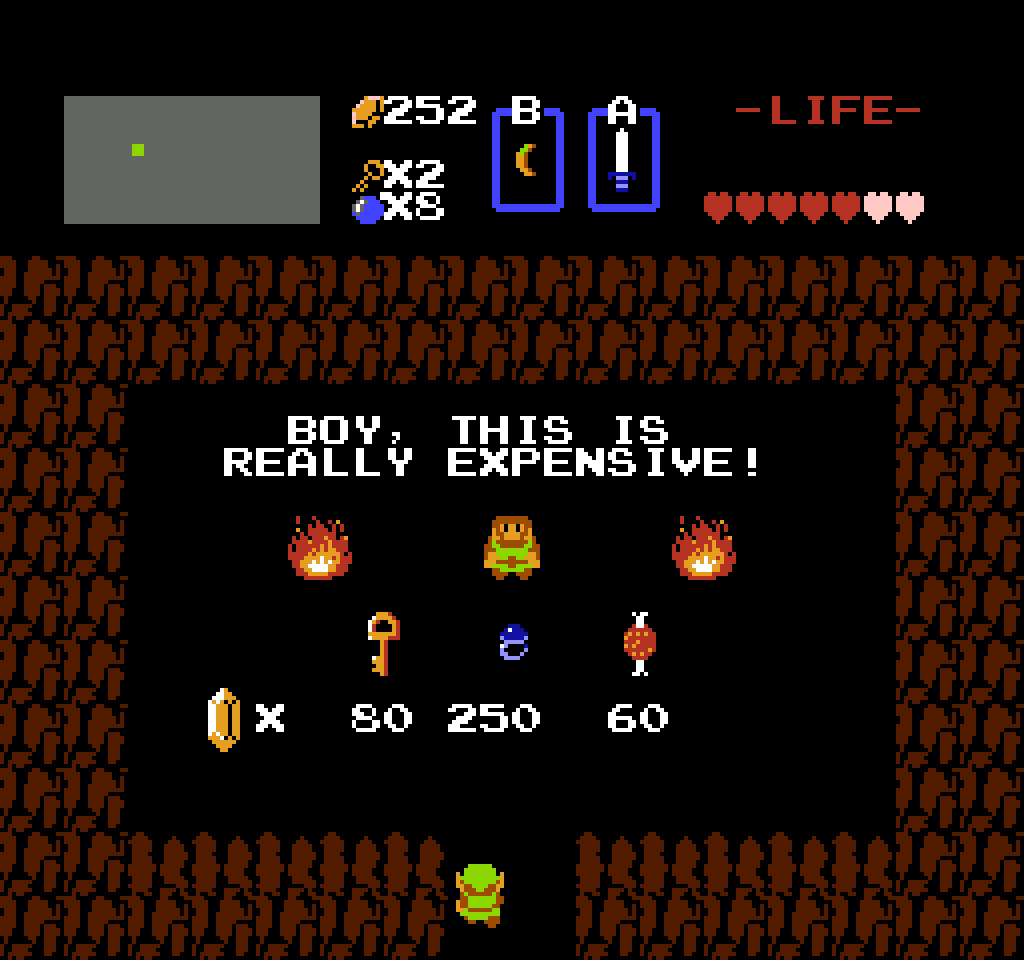
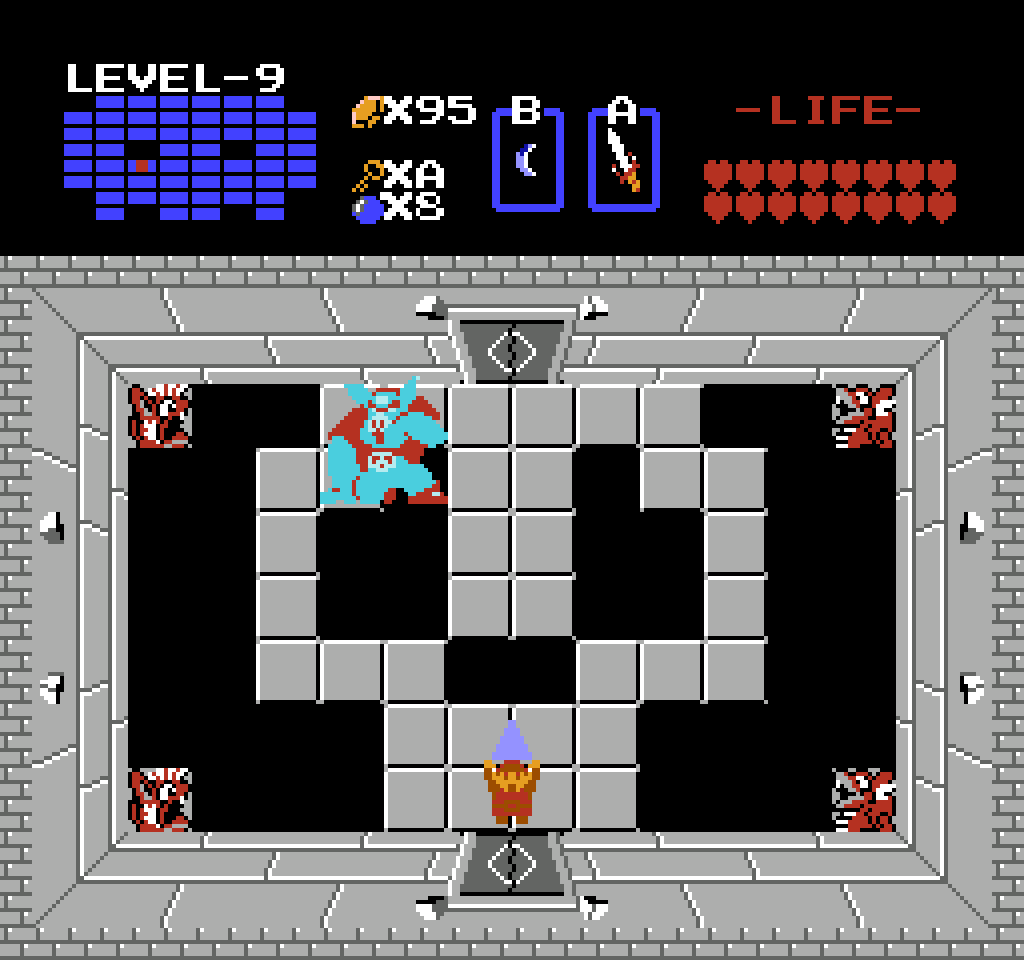

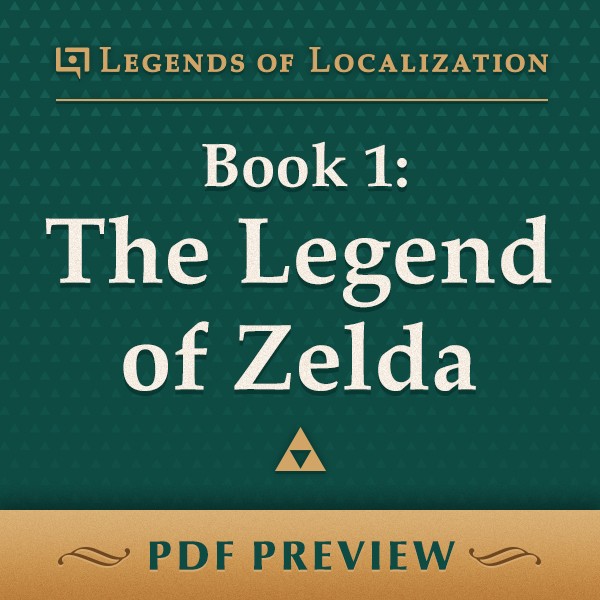
No Comments